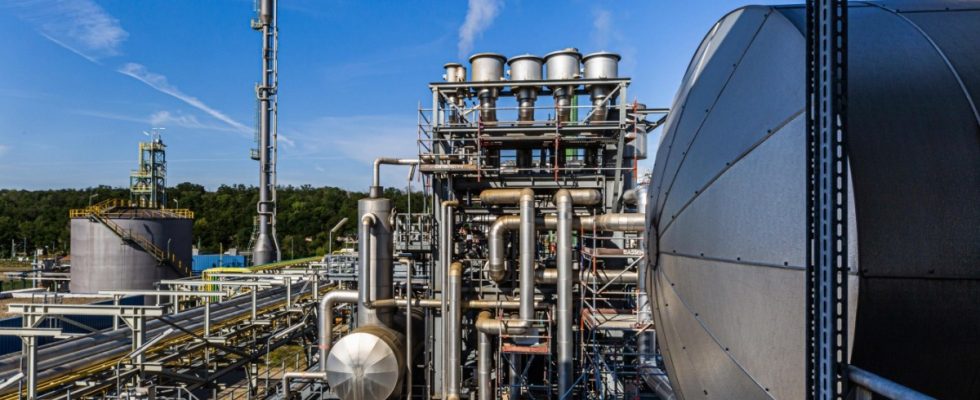Recently, mayors and company bosses have been writing their fingers sore and mailboxes are overflowing. Who wants to be on the sidelines when the future comes? They all wanted to be connected to the new “hydrogen core network”. It has been clear since Tuesday what this network should look like: It does not leave out any of the 16 federal states, but is denser in the northwest than anywhere else in the country – a large proportion of the coveted hydrogen molecules could arrive here at some point. The industry on the Rhine and Ruhr is well served, but also those in Bavaria and Baden-Württemberg. Hydrogen could also be fed in via Italy. And above all: the Internet should be just the beginning. “We are solving the chicken-and-egg problem,” says Federal Economics Minister Robert Habeck (Greens).
The problem so far has been that everyone in the world wants to rely on green hydrogen – either to produce “green” steel with it, to use it in chemistry or to use it to make climate-friendly fuels. But so far no one is doing that. This is because hydrogen is not yet available on an industrial scale anywhere. Which in turn is because it is not used anywhere on an industrial scale. Without demand there is no supply, without supply there is no demand. “We now have to build a network for an energy source that is not yet there,” says Habeck as he presents the plans.
Just last week, the Bundestag passed an amendment to the Energy Industry Act, which also regulates the financing of such a pipeline system. Similar to electricity and gas pipelines, those for hydrogen should ultimately be financed by the users. First, however, the federal government should make advance payments – the federal cabinet wants to deal with the exact financing on Wednesday. FNB Gas, the association of German gas network operators, estimates the total costs at 19.8 billion euros.
The energy industry insists on such distribution systems
The operators of the gas pipelines have also drawn up the plan. Of the originally planned 11,700 kilometers of lines, 9,700 kilometers remained. The core network should be in place by 2032. “This places Germany at the top in Europe,” says Thomas Gößmann, head of FNB Gas. The conversion of the industry towards renewables is tangible in the project: 60 percent of the lines have so far transported natural gas. The rest will be rebuilt. It is, says Habeck, something like a new motorway network. Beyond that, figuratively speaking, there will also be federal and country roads that branch off and reach other customers. Every two years, the cabinet will also decide on this on Wednesday, the network plan will be checked and, if in doubt, adjusted.
The energy industry insists on such distribution systems. After all, 1.8 million potential hydrogen customers are currently connected to the gas distribution network, according to the energy association BDEW. “In order to make Germany an industrial location climate-neutral and future-proof, the framework conditions for the connection lines to the customer must now urgently be created,” says association boss Kerstin Andreae.
It must also be ensured that enough hydrogen is produced and fed in. Green hydrogen can be produced from excess wind power via electrolysis. But it can also be imported by ship, for example in the form of green ammonia. Countries like Norway are speculating on also selling “blue hydrogen”. It is made from natural gas and the resulting carbon dioxide is stored underground.
In all cases, the core network is planned to be larger than necessary. It should be able to output 270 terawatt hours of hydrogen energy annually – although demand is only expected to reach 100 terawatt hours by 2030. “We are planning for the future,” says Habeck.

